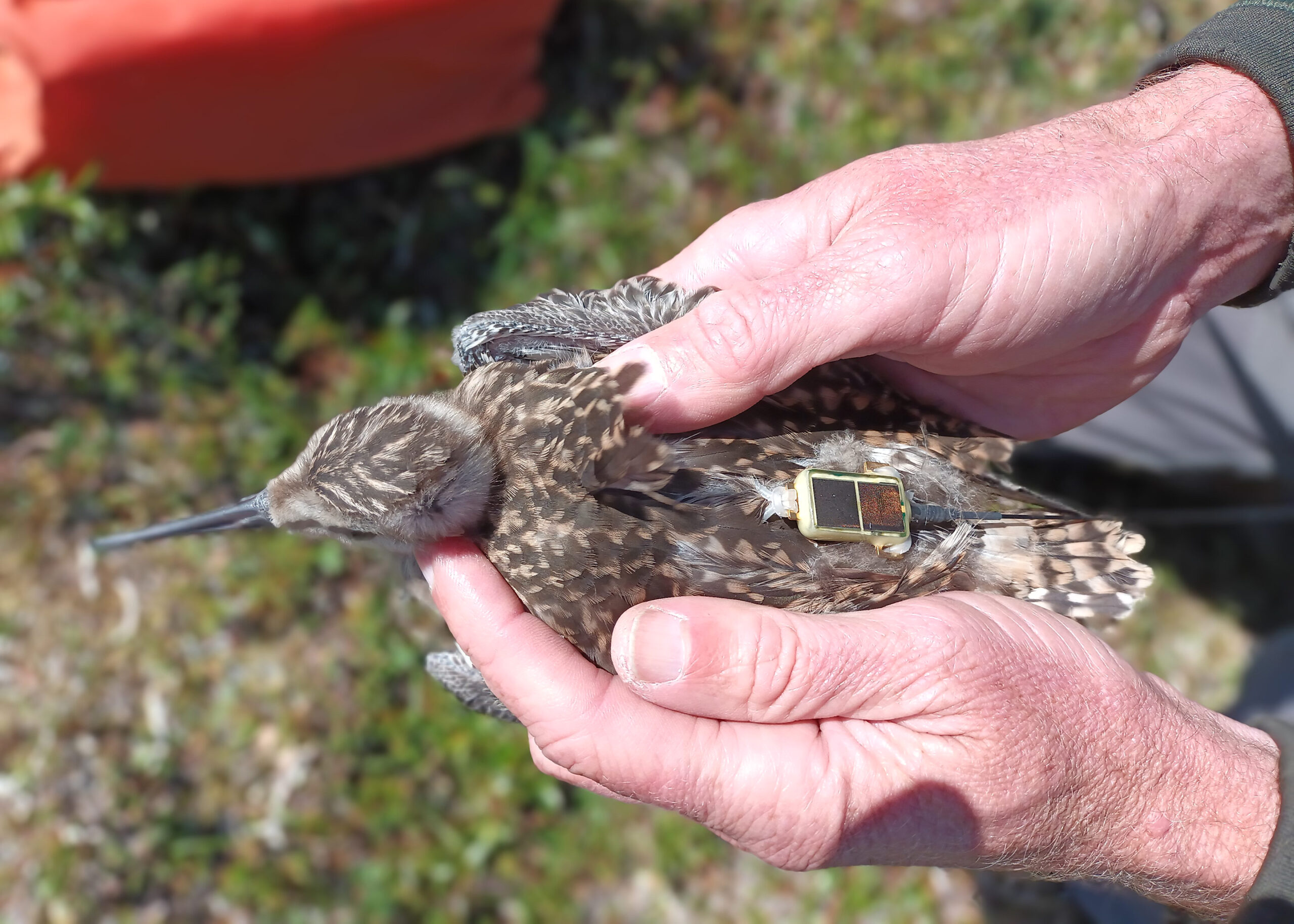2022 EAAFP Small Grant Fund Project by
Jesse R. Conklin
Independent Researcher
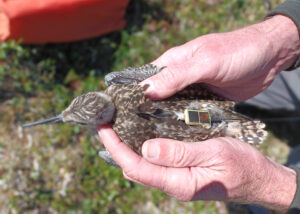
Satellite-transmitter deployed on Bar-tailed Godwit chick. ©Jesse Conklin
Bar-tailed Godwits Limosa lapponica are globally Near Threatened, and on the East Asian-Australasian Flyway, the subspecies L. l. baueri qualifies for Vulnerable status based on observed population declines and loss of staging habitat. This subspecies breeds cryptically and at low densities in remote regions of Alaska, and consequently there is little breeding-related demographic information, and essentially nothing is known about fledging success or post-fledging survival rates within Alaska or on the first southward migration. Alaska-breeding Bar-tailed Godwits have received global attention for their impressive annual migration of >30,000 km, which includes a direct trans-Pacific flight of 11,000–13,000 km from post-breeding staging grounds to non-breeding sites in New Zealand and eastern Australia, the longest non-stop flight recorded for any landbird. However, we have no information about how juvenile godwits manage this southbound journey, which is performed when they are just 3–4 months old and may represent a critical demographic bottleneck for the population.
This pilot study was designed to achieve two complementary goals: (1) to gather the first data on the movements, growth, and survival of Bar-tailed Godwit chicks at the breeding grounds in Alaska, and (2) to assess the feasibility of tracking juvenile Bar-tailed Godwits on their first southbound migration by deploying satellite-transmitters on nearly-fledged birds at the breeding grounds.
In collaboration with colleagues from the U.S. Geological Survey Alaska Science Center, U.S. Fish & Wildlife Migratory Bird Division, and Max Planck Institute for Ornithology in Germany, I conducted this work in June–July 2022 near Nome, Alaska, a known breeding area for Bar-tailed Godwits. The plan was to: (1) locate young broods in or near nesting areas, (2) capture adults and chicks to deploy radio-transmitters, (3) track brood movements and recapture chicks periodically to monitor growth, and (4) deploy satellite-transmitters once chicks had grown to a sufficient size to carry them, to follow movements away from the breeding area.
Apparently low local breeding success in 2022 meant that few Bar-tailed Godwit broods were available for study. However, we found seven broods and radio-tagged 1–3 chicks in five of these broods; no adults were captured and tagged. Following these broods, we collected the very first chick growth, movement, and diet data for the subspecies. Broods moved surprisingly large distances: chicks just 2–3 days old moved 200–500 m per day, and older chicks (>20 d old) moved at least 1–3 km per day, including climbing from low, wet valleys to open habitats along ridges. We followed one brood long enough to deploy 5-g solar-powered satellite-transmitters on three chicks estimated 26 days old, on 15 July. We successfully tracked one of these chicks (individual flagged ‘B6’) to the non-breeding range: this bird flew from the study area to the Yukon-Kuskokwim Delta on 6 August, where it staged until departing on 13 October, and then flew non-stop to Tasmania, an estimated flight distance of 13,436 km in 11 days. This was the longest non-stop distance recorded for any landbird species, surpassing all previous adult migrations tracked for this species (up to ca. 13,000 km).
Despite a lower-than-expected sample of godwit chicks, we consider this pilot study a successful proof of principle and methods for further research. In particular, we showed that tracking Bar-tailed Godwits on their first southward migration is feasible from the breeding grounds, and that first-time migrants are capable of making the trans-Pacific journey non-stop, as adults do. We expect study areas with higher godwit breeding density and lower topographic and vegetation diversity, such as the Yukon-Kuskokwim Delta, will be more profitable for future efforts to study chick growth, movement, and survival, and we will aim to follow up these preliminary efforts in the coming years.
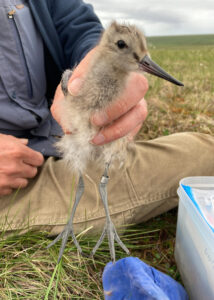
Bar-tailed Godwit chick captured at ~20 days old ©. Photo: Dan Ruthrauff
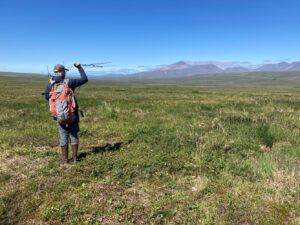
Radio-tracking Bar-tailed Godwit chicks. Photo : © Dan Ruthrauff
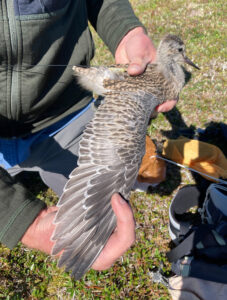
Wing development of godwit B6 at 26 days old. ©Photo: Jesse Conklin
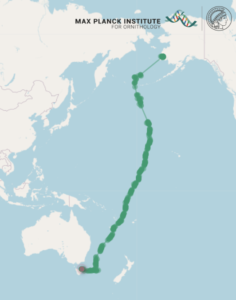
Southbound migration track of B6 from Alaska to Tasmania. ©Image: Max Planck Institute of Ornithology, Germany
The project was funded through the 2022 EAAFP WG/TF Small Grant Fund. View the report, Click here.

